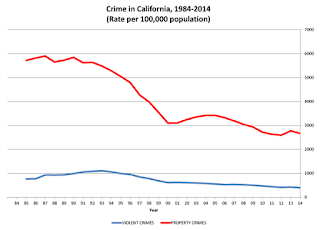No gang name will be given any publicity here as I write up this meeting, which will be a general policy for this site.
The early part of the meeting centered on sharing with residents their resources for long term problem solving. Within West Division that is one of four resource officers that can be contacted through LBPDWest@LongBeach.Gov. The resident can use 911 or the police non emergency number, (562) 435-6711, to address the immediate problem. Then, if it's on going, they can ask their resource officer to address the core problem. Each resource officer is assigned to a different part of West Division, which encompasses Cherry to the end of Long Beach and the 405 to the beach.
The first speaker, Chris Rowe, was from the Fire Department and talked about grants through Homeland Security and CERT. Because I graduated from CERT, and am very familiar with the program, and I will write about that program at a later date. But very briefly CERT trains you in volunteer support for the Fire Department when major emergencies overwhelm their resources.
The majority of the meeting centered on gangs. Detective Hector Gutierrez of the GVC Department spoke about Long Beach gangs. Gutierrez didn't address the crowd for very long before opening up the meeting to questions. The first question was if there had been an increase in gang activity since the Early Release Program.
Gutierrez did answer that question yes, but added the way gangs operate has changed significantly. In the past you could identify gangs by the colors they wore and signs they held up. Today most gang members try much harder to blend in. While they are still committing crimes, the underlying motive is money more often than violence. This keeps today's gangs active in drug sales, breaking and entering and newer crimes like identity theft.
 |
| Overall crime is down in the city/ state despite June trends |
Gutierrez estimates that Long Beach has 5,000 active gang members, and that accounts for about one percent of the population. However, be aware that number does not account for those gang members smart enough to keep their identity a secret or the fact that the concentration of gang members west of Cherry is probably somewhat higher than to the east of Cherry.
Many of the questions tonight centered on tagging and how it seemingly can go back up so quickly after its taken down. That question was never really ever answered. Another question asked was what is the practical purpose behind tagging in the first place. That was answered rather directly: to identify the gang's area, intimidate residents and warn other gang members to stay away.
Lt. Mike Lewis did give a brief introduction to the Go Long Beach App, for residents who want to take that tagging down. Go Long Beach gives residents the opportunity to access City Hall, 24-hours a day from anywhere. It allows residents to quickly submit service requests for issues such as graffiti, potholes, illegal dumping, sidewalk repair and sign damage. You do not need to own or even live near the graffiti you report for it to be taken down; and removal is usually within 24-hours.Illegal dumping, while it will be addressed, is addressed in a much slower manner.
A good question was asked what gang intervention programs were being implemented. One very good example of an intervention program, Safe Passage, was used as an example of an intervention program being developed on Long Beach's West Side neighborhoods. The program is based on a Bay Area organization that uses volunteers to provide a safe route for children and youth as they walk home from school in San Francisco’s notorious Tenderloin neighborhood. Now, residents of the Santa Fe Corridor are creating a similar program, partially in response to stabbing of Keyshawn Brooks, a former Cabrillo student killed while walking home from school in March. The program will use volunteers, businesses and other stake holders to help provide West Side students with a safe passage home from school, in hopes that events like the Brooks' murder do not repeat again.
Just throwing this out there: it sounds like a great idea for the Anaheim Corridor as well.
Update: 08/27/2015: Also I have added a list of nine gang intervention programs to the neighborhood resources map: https://www.google.com/maps/d/edit?mid=z-3IaZ6r2iPM.kwHU-tG05JoM



No comments:
Post a Comment